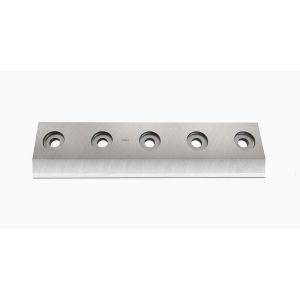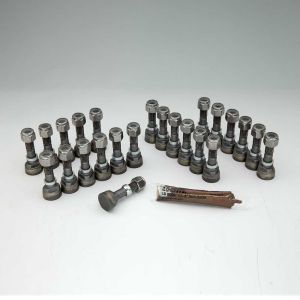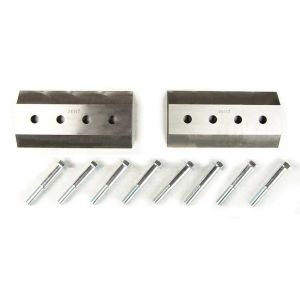5 Things to Consider When Replacing Your Chipper Knives

Are your chipper blades providing the performance you need? When blades are dull or damaged, the chips produced are inconsistent and are torn, instead of cut. When your customer sees that your chips are not consistent, the entire order may be rejected. Even worse, your customer may look to find another supplier.
Small business owner-operators, rental warehouses, and large-scale forestry and debris removal companies face the same question: How can I maximize the life of my chipper blades without compromising product quality?
Before you replace your next set of chipper blades, consider how these five areas impact the life and performance of your knives.
1. Are you operating within the specifications of your machinery and your blades?
Review the specifications of your wood chipper with everyone who will operate the machine. Doing so increases job site safety and can improve the overall life of your wood chippers and chipper blades.
After all safety procedures are covered, review the operating specifications of both the machine and its blades. Within the wood chipper, a chipper blade rotates around a drum while another blade meets the rotating blade to create a pinch point (the point where the material is cut). As the blades wear, they become narrow and no longer meet to form a clean pinch point. When your chipper blade is worn, the chips are not clean-cut. Instead, they are ripped, torn, and inconsistent. Rocks, nails, and fence posts can all decrease the life of your chipper knives and contribute to inconsistent chips.
2. Have you considered the impact weather has on your wood chipper?
Each changing of the season is a great time to evaluate the maintenance of your wood chipper and chipper blades. As the weather warms, consider the impact of rising temperatures on your equipment. When oil and hydraulic fluid operating temperatures exceed the limits of the fluid, equipment operation becomes inefficient.
However, warmer temperatures and humid air do make chipping wood easier. The humidity softens the wood, so the blades do not have to work as hard. As a rule, blades used in warm, humid climates will provide more operating hours than those used in cooler, drier climates.
During the winter, operating fluids can thicken as outdoor temperatures drop. In some cases, it may be necessary to warm fluid lines or equipment to ensure the wood chipper is operable. Cold, icy temperatures also make wood harder to go through, causing chipper knives to wear more quickly.
3. How many total hours do you have on your knives?
Tracking the number of hours between blade changes is a great way evaluate the performance of your wood chipper blades. While this may be more difficult for rental warehouses, equipment owner-operators can create a log that notes the hours on each machine, the material being cut, and the environmental conditions, as each of these factors will impact the life of your chipper knives. For example, both white pine and maple are softwoods while red oak is harder and will cause more wear on the chipper blades. Fibrous materials, such as palm trees, also wear the blades more quickly.
Utilize this log to determine when blades are wearing prematurely and to plan wood chipper blade inventory.
4. Have you evaluated your chipper knife inventory?
Storing wood chipper blades can be challenging for some operators. However, maintaining even a small inventory of wood chipper blades ensures that you always have a fresh set of knives available when new jobs arise.
At a minimum, maintain three sets of wood chipper blades for each machine model. This will allow you to have one set on the machine, one set as a backup, and one out for sharpening.
5. Are you taking care of your wood chipper knife edge?
Wood chipper blades are precision equipment; meaning that they must be maintained to precise tolerances to provide optimum performance. Imprecise sharpening changes the geometry of the knife and impacts the balance of the equipment. When this occurs, the pinch point of the wood chipping blades is compromised, and there is additional wear and tear on the blade itself. As a result, the cutting edge of the knife dulls more quickly, and cuts are not as efficient or consistent.
Maintaining a consistent, high-quality product and peak wood chipper performance requires wood chipper blades that are routinely evaluated, precision sharpened, and when needed, replaced. Develop a maintenance schedule and inventory that fits the needs of your business and ensures that you always have a set of sharp, wood chipper knives available when you need it.





